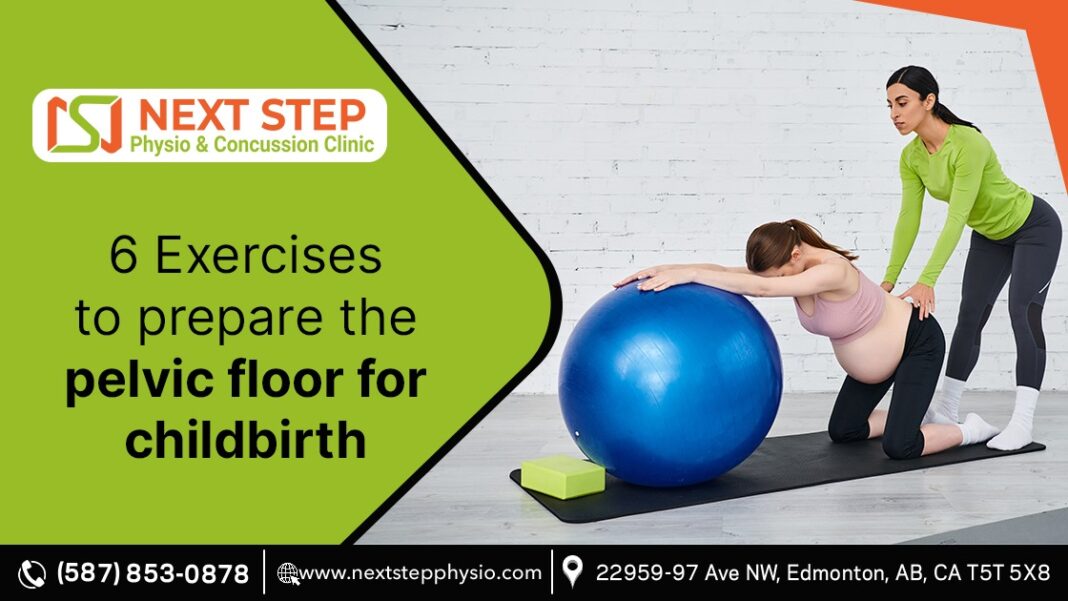The pelvic floor is a bowl-shaped network of muscles and connective tissues stretching across the pelvis’s bottom. It supports organs such as the bladder and uterus, maintaining their proper position and function. During pregnancy, pelvic floor physiotherapy in Edmonton plays a critical role in adapting to the increasing weight of the growing uterus and preparing for childbirth. As the baby grows, the pelvic floor stretches and becomes more flexible to accommodate delivery. This structure also assists in controlling the release of urine and feces, making its strength essential for preventing incontinence during and after pregnancy.
Causes of Pelvic Floor Strain During Pregnancy
Several physiological and hormonal factors cause pelvic floor strain during pregnancy. The growing uterus adds pressure on the pelvic floor muscles, causing them to stretch and sometimes weaken. Additionally, pregnancy hormones like relaxin and progesterone loosen ligaments and muscles to prepare the body for childbirth, which can inadvertently make the pelvic floor more susceptible to strain. The baby’s movements and position, particularly in the later stages of pregnancy, can also increase the load on the pelvic floor. Strenuous activities, poor posture, or prolonged standing further exacerbate this strain, emphasizing the need for proper preparation and care.
Indicators of a Weak Pelvic Floor
During pregnancy, specific symptoms may signal a weakened pelvic floor that requires attention. Common signs include frequent urinary leakage, particularly when coughing, sneezing, or laughing, and a heavy or dragging sensation in the pelvic area. Some may experience difficulty controlling bowel movements or notice persistent lower back pain, which could stem from insufficient pelvic floor support.
These indicators often worsen as pregnancy progresses due to increased weight and hormonal changes. Recognizing these symptoms early allows for targeted interventions, such as pelvic floor exercises, to restore strength and prepare the muscles effectively for childbirth through pelvic floor physiotherapy in Edmonton.
6 Proactive Exercises to Strengthen the Pelvic Floor
1. Kegel Exercises
Kegel exercises are fundamental for strengthening the pelvic floor muscles, which are essential for controlling and relaxing them during labour. Through pelvic health physiotherapy, they enhance muscle flexibility and prevent issues like urinary incontinence post-delivery.
- How to Perform: Sit or lie in a relaxed position. Focus on the muscles used to stop urine flow and gently contract them. Try to hold the contraction for about 5 seconds, then relax for 5 seconds. Gradually extend the hold to 10 seconds as muscle strength improves. Perform 10–15 repetitions per set and aim for 2–3 sets daily.
- Pro Tip: Avoid tightening the abdominal or thigh muscles to isolate the pelvic floor effectively.
2. Deep Squats
Deep squats are excellent for opening the pelvis, improving flexibility, and strengthening the lower body in preparation for delivery. This position can mimic labour postures, making it practical for childbirth.
- How to Perform: Stand with feet and toes pointing outward. Slowly lower the hips as though sitting on a chair, with the back straight and chest lifted. Hold at the lowest point for 5–10 seconds, then return to standing. Perform 10–12 repetitions daily.
- Pro Tip: Hold onto a stable surface or partner for balance, especially in later pregnancy stages.
3. Pelvic Tilts
Pelvic tilts strengthen the core and lower back while helping relieve common pregnancy-related backaches. They also improve pelvic alignment for smoother labour.
- How to Perform: Try to lie on the back with the individual’s feet flat on the floor. Inhale deeply, then exhale while tilting the pelvis upward, pressing the lower back into the floor. Try to hold the position for a few seconds before returning to the starting point. Complete 10–15 repetitions in 2–3 sets daily.
- Pro Tip: Perform pelvic tilts on an exercise ball for added core engagement and a gentle stretch.
4. Bridge Pose
The bridge pose enhances pelvic floor strength, boosts endurance, and prepares muscles for sustained effort during labour.
- How to Perform: Try to lie on the back with feet and arms by the sides. Press into the feet, lift the hips upward, and engage the pelvic floor muscles. Hold the bridge position for 5–10 seconds, then slowly lower the hips. Repeat for about 8–12 times by increasing the hold duration.
- Pro Tip: Keep the knees stable and avoid overarching the back to prevent strain.
5. Butterfly Pose
The butterfly pose promotes flexibility in the hips and thighs, encouraging a natural pelvis opening for delivery.
- How to Perform: Sit on the floor with the soles of the feet and knees bent outward. Pull the heels gently toward the body, maintaining a straight spine. Use the hands to press the knees closer to the floor, stretching the inner thighs and pelvic area. Hold for 20–30 seconds and repeat 4–5 times.
- Pro Tip: Place a cushion under the hips for comfort and better posture during the stretch.
6. Perineal Massage
Perineal massage is a targeted technique to prepare the pelvic floor for stretching during childbirth, reducing the risk of tears.
- How to Perform: Wash hands thoroughly and use a lubricant like coconut oil. Insert the thumbs 1–2 inches into the vaginal opening. Gently apply pressure downward and outward toward the anus, mimicking the stretch experienced during labour. Perform for 5–10 minutes daily starting the 34th week of pregnancy.
- Pro Tip: After a warm bath, perform this massage to relax the pelvic muscles and make the process more comfortable.
These exercises and proper breathing and posture create a strong, flexible pelvic floor ready to support a smooth childbirth experience.
The Path to Empowered Motherhood
Caring for the pelvic floor is essential for a smoother delivery and faster postpartum recovery. Prioritizing pelvic floor physiotherapy for women can make all the difference in a confident and healthy childbirth experience. Take the next step in your pregnancy journey—contact Next Step Physiotherapy Clinic for personalized pelvic floor care and enhanced support. Whether you seek pelvic floor physiotherapy in Edmonton or specialized care, our team guides you through every step.

